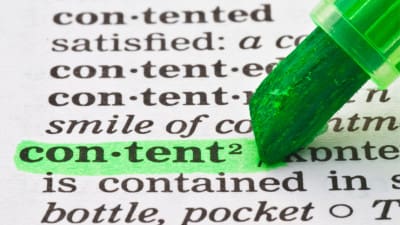If you’ve ever been scolded for turning in a story late, not sticking to the angle, or filing a column with 500 words more than assigned, you know firsthand that it hurts when you disappoint your editor.
As you grow in your writing career, taking note of your mistakes may bruise your ego, but it’s essential to learn from your freelancing faux pas if you want to be a writer that editors know they can rely on. From nailing pitches to turning in killer content, there are certain things you can do to impress your editor and stand out among other contributors.
A handful of editors from various publications across the country share their pro-tips on how you can avoid common slip-ups and be a stellar freelancer that editors know they can depend on time and again. Here’s how you can move from bench-warmer to MVP status.
ON PITCHING
Because of the current climate of the media (you know, cutting budgets and staff), editors are relying on freelancers more than ever. They are looking to hire writers who are in-the-know and can pitch great stories.
“One of the most valuable assets of a freelancer is creativity,” says Stephanie Breijo, Restaurants & Bars Editor at Time Out Los Angeles. “I can’t tell you the number of times I’ve received ‘got any stories for me?’ without any ideas for content attached,” she says of her previous editing gigs. “It makes the editor’s job so much easier if writers are actively pitching relevant content and not just lining up to be told what to do.”
While it’s okay to reach out and request an editorial calendar and inquire about what kind of content editors are looking for, it comes across as lazy to ask for assignments, even if you have a well-established relationship with the editor and publication.
“I like when writers ask what type of content we are looking for, then craft pitches accordingly,” says Stephanie Cain, Real Weddings Editor at The Knot. “All editors have gaps in the content they want showcased on their sites and in their magazines, so it makes for better collaboration.”
If you want to get on an editor’s radar, be sure you craft story pitches that are well-researched, relevant and insightful. Nothing annoys editors more than broad topic story pitches without a defined angle.
“Come with more than an idea. If it’s an essay, you should have a thesis or an angle, not just a topic that you’re interested in ‘exploring,’” says Ruth Spencer, senior editor of New York Magazine’s The Cut. “If it’s a reported piece, tell me the question you’re interested in answering and who you’re going to talk to to do so.”
When pitching, make sure all your ducks are in a row, and be prepared to answer any follow-up questions your editor may have. Be sure to include statistics and research to back up your idea.
“My favorite writers have done some leg work/due diligence on the pitch before they pitch it,” says Maximillian Potter, Editor at Large for Esquire, who writes stories for the magazine and also assigns and edits pieces that freelancers pitch him.
Potter, who has freelanced on and off for the last two decades, knows firsthand that the freelance life isn’t easy—even for the greatest, most talented writers out there.
“They know they already have the cooperation of X, Y or Z,” adds Potter. “They knew what would be the best timing for the piece and why. It’s not possible all of the time to ascertain such things before pitching/embarking on a story, but often it is. My favorite writers think this way. My favorite writers anticipate me reading their query and basic questions I’ll have, and they have them answered before I ask them, or rather, their query is framed such I don’t have to ask them basic questions.”
If you are pitching an aesthetically driven story, go the extra mile and create a mood board of images to give your editor an idea of how the story will play out visually.
Although it may seem obvious, the style and tone in which you write your pitch is crucial to you receiving the assignment. While your story proposal should be pithy and straightforward, it shouldn’t lack in personality.
“Don’t make a first-person story sound like a sales pitch,” adds Cain. Charm your editors with your brevity, intelligence and written charisma.
“Write the pitch like you’d write the piece! Give me a sense of your style, tone, wit, humor. Don’t be lazy,” says Spencer. “I read pitches closely, and I often assign based on whether or not I like the way it’s written.”
ON WRITING + EDITING PROCEDURES
Before you sit down to write your story, request the publication’s style guide. Are they old-school and embrace the Oxford comma? Do they use first names instead of last names for attributions? Do they live and die by The Chicago Manual of Style?
Also, be sure to pick up a copy of the publication to scope out story formatting. When you turn in your story, you don’t want your editor to get hung up on silly formatting and style issues. The same goes for copyediting your work.
“This is so simple that it shocks me it still happens regularly,” says Cain. “Check your spelling.” Make sure your copy is clean, void of grammatical errors and misspellings. You want your editor to focus on the overall content of your story.
Being able to self-edit yourself is a skill that takes years of fine-tuning, but goes a long way with editors. While it may pain you to cut paragraphs from your story, know that it will irritate your editor even more.
“Stick to the agreed upon word count!” advises Spencer. “If I open your piece and find that you’ve gone way over, that just means I’ve got a lot more work to do than I originally allotted for the piece. And that’s frustrating.”
When you turn in your story, make sure your editor has all the appropriate materials they need to successfully and thoroughly edit your piece.
“Send us your backup material and contacts for fact-checking. It’s a huge help!” says Cain. “For instance, if you have recorded an interview, email over the audio file. If you worked with a PR rep, send us their phone number.”
While most publications don’t require images, it is nice to help out editors on the art side, coordinating and supplying images with businesses or travel bureaus that already have high-resolution images on hand that are ready for publishing.
While not being a part of the editing process makes your life easy as a writer, great editors are the ones who break down your writing, ask hard questions, and make you write several drafts. When your editor returns your first draft marked up in red, be polite and professional. Editing is a conversation — a back-and-forth about your story, tweaking it until it’s perfect for readers. You and your editor both need to have confidence in the story before it is published.
“My favorite writers are confident but not cocky. Stipulating the writers I like to work with can write well, they also recognize that a first draft is exactly that, a first draft,” says Potter. “My favorite writers know that we will almost certainly do a second, third and perhaps a fourth draft. These writers are confident in what they have written; they have chosen their words, crafted their sentences and followed their story structure for carefully considered reasons. Buuuuut, they recognize and welcome that he/she may not have thought of everything and there may be better ways to achieve what he/she and the magazine wants, and they are willing to take and implement editorial feedback.”
ON COMMUNICATING, IN GENERAL
As with most relationships, communication can make or break the partnership. And, because you are working remotely, good communication is crucial to maintaining a successful working relationship with editors.
When first reaching out with your pitch, be respectful of email etiquette. Follow up but don’t be a nuisance. Also, make sure you are communicating with the appropriate person at the appropriate publication before firing off an email. And always copyedit your emails.
“Make sure your contact information is correct,” says Cain. “And note the correct magazine name in your pitch!”
Before you get started on your assignment, make sure you understand what your editor requests of the story before you dive in. If you have any questions about the assignment, ask for clarification.
If you are experiencing some snags that may cause your story to be late or change the angle, let your editor know. Don’t sucker-punch your editor last-minute with a surprise.
And last but not least, remember that although it may seem like editors are ignoring you, they do appreciate you and are just super busy.
“My favorite writers are patient. Good editors know it’s hard out there and you’re busting your ass. And my favorite writers know that we are doing our very best as editors to be decent collaborators and human beings,” says Potter. “At least, all of the editors I know are busting their ass and trying to be decent human beings. We try to get you feedback and communicate as responsively and as quickly as we can, but sometimes it takes a while. Because, you know, we’re trying to work with a bunch of awesome freelancers while we’re working with you.”












